-
 Bitcoin
Bitcoin $117700
-1.00% -
 Ethereum
Ethereum $4458
-3.91% -
 XRP
XRP $3.119
0.14% -
 Tether USDt
Tether USDt $1.001
-0.02% -
 BNB
BNB $836.6
-1.56% -
 Solana
Solana $189.5
-3.90% -
 USDC
USDC $0.9998
-0.02% -
 Dogecoin
Dogecoin $0.2335
1.29% -
 Cardano
Cardano $0.9642
1.51% -
 TRON
TRON $0.3539
-1.19% -
 Hyperliquid
Hyperliquid $47.41
-1.84% -
 Chainlink
Chainlink $21.92
-3.28% -
 Stellar
Stellar $0.4286
-0.23% -
 Sui
Sui $3.724
-3.29% -
 Bitcoin Cash
Bitcoin Cash $594.8
-0.78% -
 Ethena USDe
Ethena USDe $1.001
0.04% -
 Hedera
Hedera $0.2501
-2.06% -
 Avalanche
Avalanche $23.96
-4.87% -
 Litecoin
Litecoin $119.0
-2.32% -
 Toncoin
Toncoin $3.473
0.82% -
 UNUS SED LEO
UNUS SED LEO $9.596
0.17% -
 Shiba Inu
Shiba Inu $0.00001301
-0.39% -
 Uniswap
Uniswap $11.03
-0.25% -
 Polkadot
Polkadot $3.935
-2.62% -
 Dai
Dai $1.000
0.01% -
 Bitget Token
Bitget Token $4.564
-1.76% -
 Cronos
Cronos $0.1512
-4.11% -
 Ethena
Ethena $0.7306
-1.09% -
 Pepe
Pepe $0.00001087
-2.68% -
 Aave
Aave $300.2
-4.00%
How to transfer NFTs across platforms? How to solve compatibility issues?
Transferring NFTs across platforms involves understanding blockchain tech, using compatible wallets, and possibly cross-chain bridges; always verify the transfer's success.
May 15, 2025 at 12:28 pm

Transferring NFTs across different platforms can be a complex process due to varying blockchain technologies, standards, and wallet compatibility. However, with the right knowledge and tools, you can navigate these challenges successfully. This article will guide you through the process of transferring NFTs between platforms and address common compatibility issues you may encounter.
Understanding NFT Transfer Basics
Before diving into the transfer process, it's important to understand the basics. NFTs, or Non-Fungible Tokens, are unique digital assets stored on a blockchain. Most NFTs are built on the Ethereum blockchain using the ERC-721 or ERC-1155 standards. However, other blockchains like Binance Smart Chain, Flow, and Solana also support NFTs with their own standards.
To transfer an NFT, you'll typically need a compatible wallet that supports the blockchain on which the NFT resides. Additionally, you'll need to ensure that the destination platform or marketplace supports the NFT's blockchain and standard.
Preparing for the Transfer
To prepare for transferring your NFT, follow these steps:
Choose the right wallet: Ensure you have a wallet that supports both the source and destination blockchains. Popular wallets like MetaMask, Trust Wallet, and Phantom support multiple blockchains and can be useful for cross-platform transfers.
Check NFT compatibility: Verify that the NFT you wish to transfer is compatible with the destination platform. Some platforms may only support specific NFT standards or blockchains.
Understand gas fees: Be aware of the gas fees associated with transferring NFTs. Fees can vary significantly depending on the blockchain and network congestion.
Backup your wallet: Always back up your wallet's private keys or seed phrase to ensure you can recover your assets if something goes wrong.
Transferring NFTs Between Ethereum-Based Platforms
If your NFT is on the Ethereum blockchain, transferring it between platforms that support Ethereum is relatively straightforward. Here's how to do it:
Connect your wallet: Go to the source platform and connect your Ethereum-compatible wallet (e.g., MetaMask).
Select the NFT: Navigate to your NFT collection and select the NFT you want to transfer.
Initiate the transfer: Look for an option to transfer or withdraw the NFT. This process may vary slightly depending on the platform, but it usually involves specifying the recipient's wallet address.
Confirm the transaction: Review the transaction details, including gas fees, and confirm the transfer. The NFT will be sent to the specified wallet address.
Transfer to the destination platform: Once the NFT is in your wallet, go to the destination platform, connect your wallet, and follow the platform's instructions to deposit or list your NFT.
Transferring NFTs Between Different Blockchains
Transferring NFTs between different blockchains, such as from Ethereum to Binance Smart Chain, requires additional steps and tools. Here's a general process:
Use a cross-chain bridge: Platforms like Anyswap and Multichain offer cross-chain bridges that allow you to transfer assets between different blockchains. Connect your wallet to the bridge service.
Select the source and destination blockchains: Choose the blockchain where your NFT currently resides and the blockchain where you want to transfer it.
Initiate the transfer: Follow the bridge service's instructions to initiate the transfer. This may involve approving transactions on both the source and destination blockchains.
Confirm the transfer: After the transfer is complete, the NFT should appear in your wallet on the new blockchain. You can then connect your wallet to the destination platform and deposit or list your NFT.
Solving Compatibility Issues
Compatibility issues can arise when transferring NFTs, especially across different blockchains. Here are some common issues and solutions:
Unsupported NFT standard: If the destination platform doesn't support the NFT's standard, you may need to convert the NFT to a compatible standard using a service like Wrapped NFTs. This involves wrapping the NFT in a new token that adheres to a different standard.
Blockchain-specific wallets: Some platforms may require you to use a specific wallet for their blockchain. In this case, you can transfer the NFT to a compatible wallet and then connect that wallet to the platform.
High gas fees: If gas fees are prohibitively high, consider waiting for a period of lower network congestion or using a layer 2 solution like Polygon to reduce fees.
Technical errors: If you encounter technical errors during the transfer, double-check your wallet connection, ensure you have sufficient funds for gas fees, and contact the platform's support team if necessary.
Verifying the Transfer
After transferring your NFT, it's crucial to verify that the transfer was successful. Here's how to do it:
Check your wallet: Open your wallet and ensure the NFT is no longer in your collection on the source platform but appears in your wallet on the destination blockchain.
Verify on the destination platform: Connect your wallet to the destination platform and confirm that the NFT is listed or available for use.
Check blockchain explorers: Use blockchain explorers like Etherscan or BscScan to verify the transaction history and ensure the NFT was transferred correctly.
Frequently Asked Questions
Q: Can I transfer an NFT from Ethereum to Solana?
A: Yes, you can transfer an NFT from Ethereum to Solana using a cross-chain bridge like Wormhole. The process involves wrapping the Ethereum NFT into a Solana-compatible token, which can then be transferred and used on Solana-based platforms.
Q: What happens if I send an NFT to an incompatible wallet?
A: If you send an NFT to a wallet that doesn't support the blockchain or standard of the NFT, the NFT may be inaccessible. In such cases, you may need to transfer it to a compatible wallet using a bridge service or contact the platform's support for assistance.
Q: Are there any risks involved in transferring NFTs across platforms?
A: Yes, there are risks such as high gas fees, technical errors, and potential security vulnerabilities in bridge services. Always ensure you understand the process and use reputable platforms and wallets to minimize these risks.
Q: Can I transfer NFTs without paying gas fees?
A: While it's not possible to completely avoid gas fees on most blockchains, you can minimize them by using layer 2 solutions like Polygon or by transferring during periods of lower network congestion.
Disclaimer:info@kdj.com
The information provided is not trading advice. kdj.com does not assume any responsibility for any investments made based on the information provided in this article. Cryptocurrencies are highly volatile and it is highly recommended that you invest with caution after thorough research!
If you believe that the content used on this website infringes your copyright, please contact us immediately (info@kdj.com) and we will delete it promptly.
- Kazakhstan's Crypto Leap: Bitcoin ETF and Central Asia's Digital Finance Future
- 2025-08-13 12:45:19
- BlockDAG Presale Blazes Past $371M: Fundraising Frenzy Fuels Crypto Sensation
- 2025-08-13 13:05:21
- Meme Coins: Chasing the 2025 Surge – Which Will Moonshot?
- 2025-08-13 10:25:23
- Bitcoin's Wild Ride: Rally, Pullback, and What's Next
- 2025-08-13 10:25:23
- Bitcoin, Bitmax, and Institutional Demand: A New Era of Crypto Investment
- 2025-08-13 10:45:12
- Solana, ROAM, and Airdrops: What's the Buzz in 2025?
- 2025-08-13 11:35:13
Related knowledge
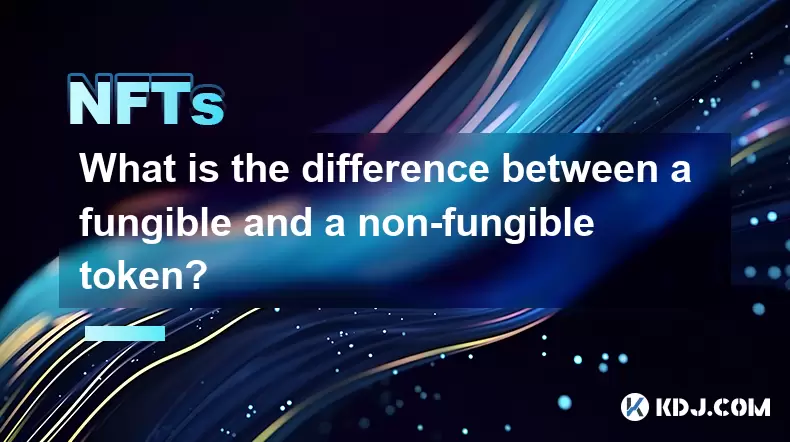
What is the difference between a fungible and a non-fungible token?
Aug 11,2025 at 12:07pm
Understanding Fungibility in Digital AssetsThe concept of fungibility is foundational to understanding both fungible and non-fungible tokens (NFTs) in...
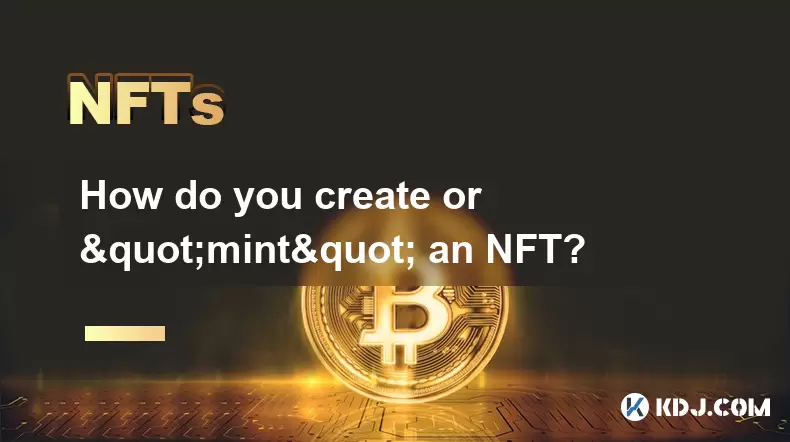
How do you create or "mint" an NFT?
Aug 09,2025 at 08:56pm
Understanding What an NFT Is Before MintingBefore diving into the process of creating an NFT, it's essential to understand what an NFT actually is. An...
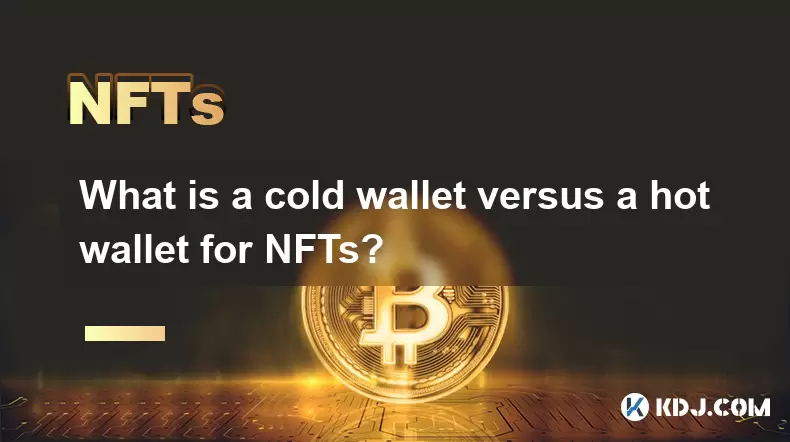
What is a cold wallet versus a hot wallet for NFTs?
Aug 10,2025 at 10:49pm
Understanding Cold Wallets and Hot Wallets in the NFT EcosystemIn the world of NFTs (Non-Fungible Tokens), digital ownership and security are paramoun...

How do I protect my NFTs from being stolen?
Aug 11,2025 at 06:28pm
Understanding the Risks to NFT OwnershipNFTs, or non-fungible tokens, represent unique digital assets secured on blockchain networks. Despite their cr...
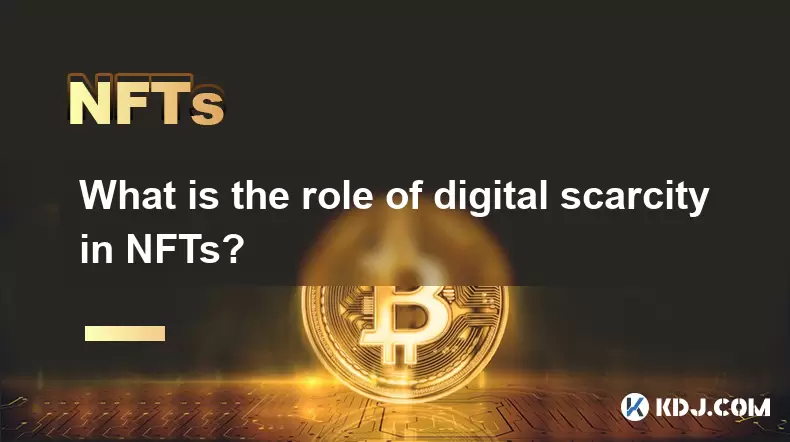
What is the role of digital scarcity in NFTs?
Aug 11,2025 at 11:36pm
Understanding Digital Scarcity in the Context of NFTsDigital scarcity refers to the deliberate limitation of digital assets to create value through ra...
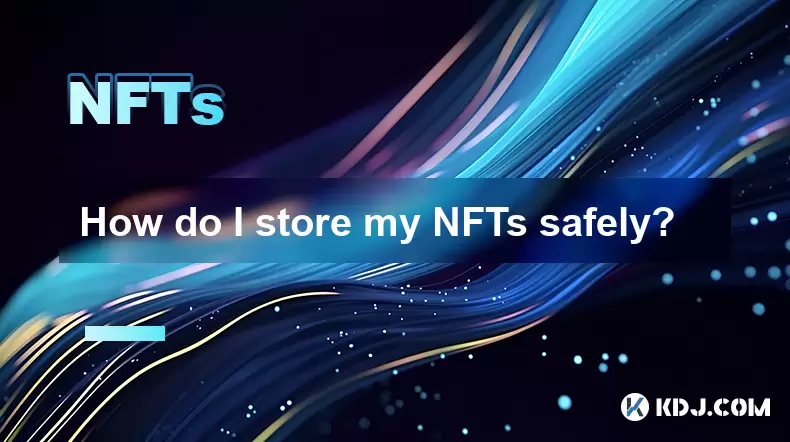
How do I store my NFTs safely?
Aug 13,2025 at 11:36am
Understanding the Nature of NFT OwnershipWhen you purchase an NFT (Non-Fungible Token), you are not storing a file like a photo or video directly on y...

What is the difference between a fungible and a non-fungible token?
Aug 11,2025 at 12:07pm
Understanding Fungibility in Digital AssetsThe concept of fungibility is foundational to understanding both fungible and non-fungible tokens (NFTs) in...

How do you create or "mint" an NFT?
Aug 09,2025 at 08:56pm
Understanding What an NFT Is Before MintingBefore diving into the process of creating an NFT, it's essential to understand what an NFT actually is. An...

What is a cold wallet versus a hot wallet for NFTs?
Aug 10,2025 at 10:49pm
Understanding Cold Wallets and Hot Wallets in the NFT EcosystemIn the world of NFTs (Non-Fungible Tokens), digital ownership and security are paramoun...

How do I protect my NFTs from being stolen?
Aug 11,2025 at 06:28pm
Understanding the Risks to NFT OwnershipNFTs, or non-fungible tokens, represent unique digital assets secured on blockchain networks. Despite their cr...

What is the role of digital scarcity in NFTs?
Aug 11,2025 at 11:36pm
Understanding Digital Scarcity in the Context of NFTsDigital scarcity refers to the deliberate limitation of digital assets to create value through ra...

How do I store my NFTs safely?
Aug 13,2025 at 11:36am
Understanding the Nature of NFT OwnershipWhen you purchase an NFT (Non-Fungible Token), you are not storing a file like a photo or video directly on y...
See all articles

























































































